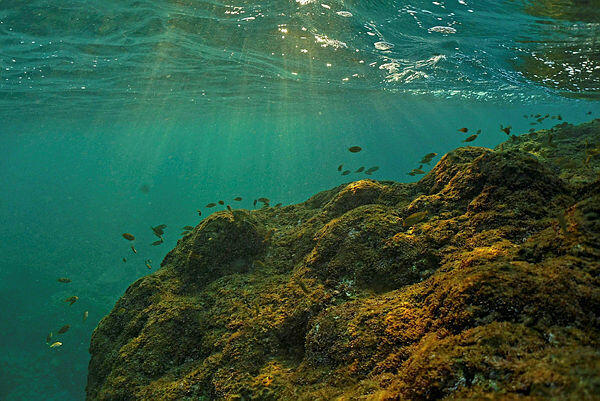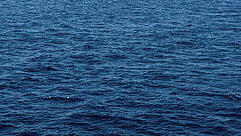For many, the epitome of a perfect vacation involves sunbathing on an exotic beach. Essential to this experience are the sand between your toes, the caressing rays of the sun, the soothing lapping of the waves and the distinctive scent of sea air. But what exactly constitutes this sea air? How does it get its unique aroma and should we be concerned about what we’re inhaling when we take that deep, refreshing breath at the beach?
Read more:
When asked to describe the smell of the sea, typical answers often include words like ‘refreshing’, ‘fresh’, ‘salty’ or ‘fishy’ with different variations. The smell will often be associated with the beach environment, such as the smell of sunscreen or of a wet dog fresh from a swim in the sea. Some even romanticize the aroma, associating it with the smell of freedom, childhood memories, energy, and health. Those who love the written word will surely recall their favorite author or poet pouring romance and love into their description of the sea's fragrance.
2 View gallery


Fish swim in the Mediterranean sea amid increasing water temperatures and a decline in seaweed off the coast of Batroun city on August 1, 2023
(Photo by Ibrahim CHALHOUB / AFP)
You’re much less likely to hear the full scientific answer, and there’s a good reason for this. The smell of the sea is produced by a cocktail - a complex mix of chemicals originating from decay, death, and bacterial breakdown, combined with a touch of saltiness, algae and marine organisms. While it may not sound as romantic or fresh as most sea-themed songs and writings, that's the reality of it. To better comprehend the origins and components of the smell of the sea, let’s delve into the study of some of the more abundant molecules that drift in the sea breeze.
So long and thanks for all the plankton
It seems that the molecule that makes the most significant contribution to the aroma of the sea is dimethyl sulfide (DMS), a very common and highly studied molecule comprising a sulfur atom bonded to two methyl groups. Though small, DMS is known for its distinctive smell, often compared to that of cabbage or cooked asparagus. But it’s not necessarily a bad smell; at certain concentrations, it can be found in wine and beer, and in a range of vegetables and fruit including tomatoes and mangoes. It also lends its aroma to aged hard cheeses and truffles. Food technologists even employ DMS to impart meat, fish, egg, butter, fruit and vegetable flavors to processed food products.
While toxic at high concentrations, the DMS molecule is almost ubiquitous at low concentrations, since it’s a by-product of bacterial decomposition in both plant and animal matter. In other words, wherever organic matter can be found, bacteria feed on it, with DMS being released as part of this process. This occurs inside our mouths, as well as across the oceans, where the main source of DMS is the decomposition of plankton. These tiny marine organisms utilize a substance called dimethylsulfoniopropionate (DMSP) in a range of biological processes throughout their lives; when they die, bacteria decompose it to DMS, which is then released abundantly into the atmosphere.
Not only does the DMS molecule contribute to the characteristic smell of the sea, it’s also an integral part of the global ecosystem. Seabirds and other marine organisms rely on this smell to locate their food, which is often found in locations with large amounts of plankton. Additionally, DMS contributes to the creation of clouds as well as to global cooling.
The DMS molecule is considered to be a primary component of the sea aroma, but naturally it is not the sole contributor. Many substances contribute to the complex aroma of the sea; including other sulfur-containing compounds, infamous for their pungency. Many are released when one organism consumes another organism. Hydrogen sulfide, for example, consists of one sulfur atom bonded to two hydrogen atoms and is emitted during the bacterial decomposition of dead algae. Its unique aroma, often likened to that of rotten eggs, contributes to the overall scent of the sea. It is possible to smell the differences in sea aroma based on the algae concentration in different locations.
The aroma of the sea is also influenced by other aromatic substances, such as bromophenols, a family of volatile compounds known for their strong fishy smell. The distinctive odor and flavor of fish and other seafood, such as mussels, shrimp and crabs, largely derive from these substances. Interestingly these compounds are likely not produced by the fish and seafood themselves, but accumulate in their bodies due to their consumption of benthic organisms such as sea worms and algae, which have high concentrations of bromophenols in their diet.
Absence of bromophenols alters the flavor of fish. Thus, one of the great challenges in fish farms is to provide the fish with food that contains all the components necessary for proper development, including substances like bromophenols to impart a flavor similar to that of fish living in the sea.
In addition to the key molecules responsible for the cocktail that forms the sea aroma, many other aromatic molecules contribute their unique aromas to the scent of the sea. These include additional by-products of bacterial decomposition and decay of biological materials, pheromones, and other chemical signals that animals release to their surroundings, substances originating in the digestive system of marine organisms, compounds resulting from volcanic activity, and more, all play a role in shaping the rich bouquet of aromas that comprise the scent of the sea.
So indeed, deconstructing the sea scent into the molecules that compose it may not yield the most romantically alluring results. Yet, for those of us who find that a deep breath at the seashore instantly improves our mood, perhaps we can learn about the chemistry responsible for this fresh smell and then forget about it for a while to simply relish and enjoy the experience.
- Content distributed by the Davidson Institute of Science Education


